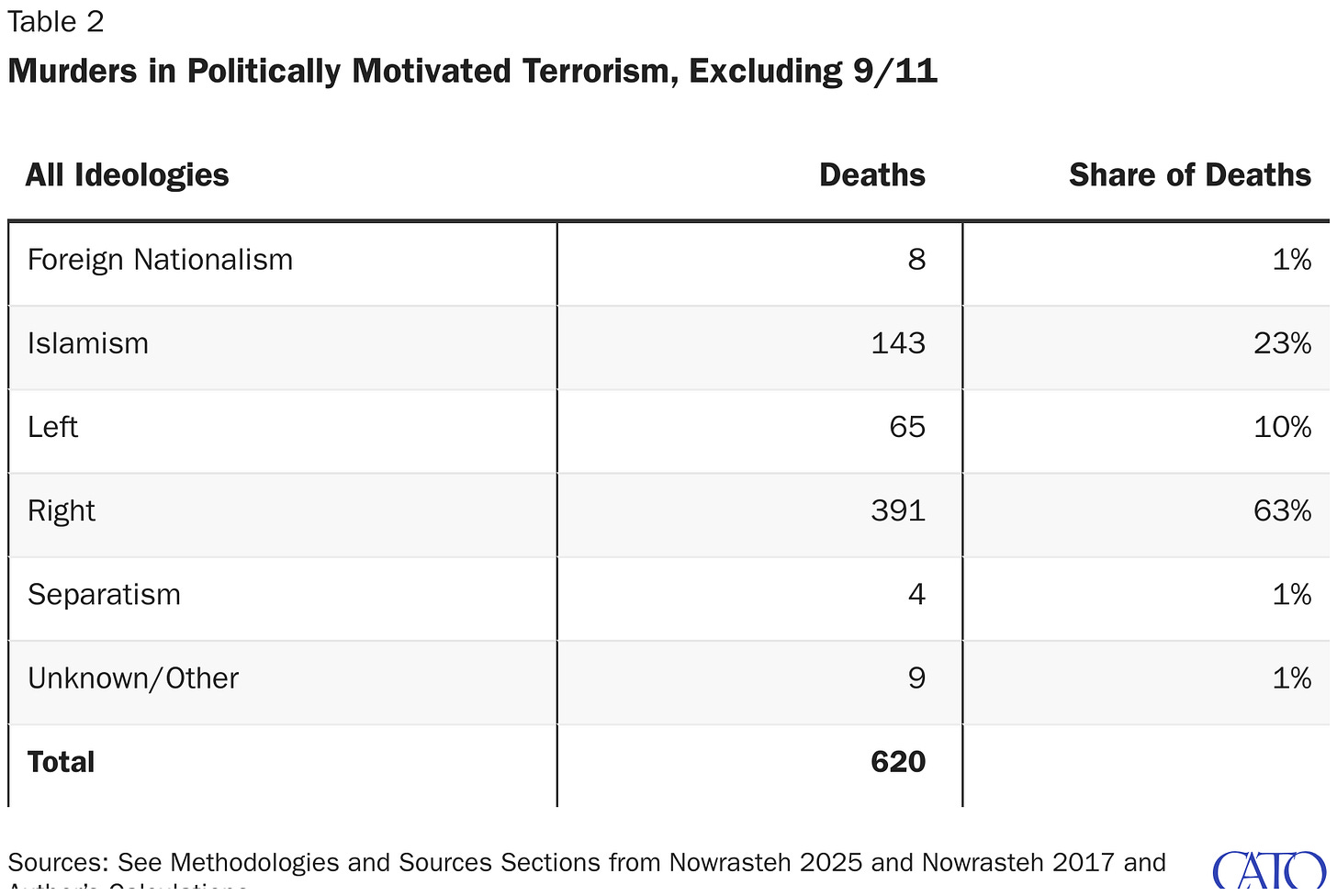The Cato Institute’s Alex Nowrasteh examines trends in terrorists attacks in the US from January 1, 1975, to September 10, 2025 (the murder of Charlie Kirk). While the single, greatest loss of life is the terrorist attacks on 9/11, Nowrasteh argues “it may make sense to exclude them because they obscure other trends. He also thinks that “the 9/11 terrorist attacks are also plausibly distinct” from “other Islamist attacks.” Excluding
…9/11 reduces the number of murders to 620 from 3,599 and cuts the Islamist share of murder from 87 percent to 23 percent. It similarly raises the right-wing share of murders in terrorist attacks from 11 percent to 63 percent, the left-wing share from about 2 percent to 10 percent, and the unknown/other share to 1 percent.




With all due respect, starting the data set at 1975 and then “finding” more right wing violence than left wing violence is not social science. The biggest period of political violence in modern American history is the late 60s through the early 70s, and it’s not even close, and it was almost all left wing violence. It’s also a mistake to just exclude 9/11 because it’s such an inconvenient outlier. The largest attack on American soil should inform how we think about the threats to civil order, especially considering that by all accounts, the gloves came off after 9/11 for the intelligence agencies, and probably dozens of other islamist plots were thwarted (compare Europe, where the American IC plays only a supporting role — their struggles with Islam are ongoing). Excluding 9/11 really is like the old joke: “Well, Mrs. Lincoln, besides *that* how was the play?”